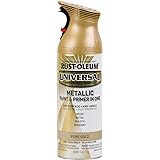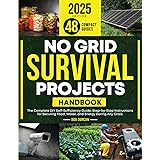Creative DIY Gadgets: Mastering Miniature and Giant Pranks for School Fun
A recent study highlights that over 70% of students actively engage in creative, hands-on activities outside of their academic pursuits, frequently involving DIY projects and imaginative experiments. This impressive statistic truly underscores a universal inclination towards ingenuity and amusement, which often finds its expression in unconventional yet engaging ways, particularly within the dynamic environment of a classroom. The video above offers a whimsical exploration into this creative spirit, showcasing a series of incredibly clever DIY gadgets that playfully challenge perceptions of size, transforming ordinary school days into memorable adventures with a touch of magic and mischief.
In the spirit of imaginative learning and lighthearted fun, we delve deeper into the art of crafting these extraordinary items. The narrative revolves around Miss Smith, a teacher whose unique methods involve shrinking students’ tech or replacing them with comically oversized versions. Such scenarios provide a perfect backdrop for understanding the practical applications of crafting materials like EVA foam, acrylic paints, and various adhesives, all while engaging in the delightful world of school pranks. These projects are not merely about creating props; they are about fostering problem-solving skills, precision in fabrication, and an appreciation for visual gags that can lighten any routine.
Crafting Clever Miniature Tech for Classroom Capers
The concept of miniature gadgets often elicits a sense of wonder, making the familiar seem alien and comically impractical. One of the prime examples illustrated is the tiny smartphone, a device designed to thwart the modern student’s penchant for selfies during class. This particular miniature phone is not just a prop; it serves as a powerful visual comment on the distractions posed by personal devices in an educational setting. The construction process is meticulously detailed, beginning with a small, thin eraser that is carefully covered with white acrylic paint to form the base. The reverse side is then painted a subtle pink, adding a touch of authentic phone aesthetics.
Further enhancements involve attaching a printed screen image to the white side using double-sided tape, creating the illusion of a functional display. A central button is skillfully fashioned from a ballpoint pen refill, providing a tactile element, while a camera detail is drawn on, enhancing the device’s realism. The iconic apple logo is meticulously painted in silver, completing the transformation into a recognizable, albeit unworkable, smartphone. This compact device effectively serves its purpose within the video’s narrative, rendering traditional phone functions like taking pictures or unlocking via facial identification entirely impossible, thereby refocusing attention back to studies.
The Diminutive E-Reader and Laptop Mock-ups
Expanding on the theme of shrinking electronics, the video also features a miniature e-reader, a brilliant device intended to challenge even the most dedicated readers. Its construction involves a base made from thick paper, meticulously traced twice onto black EVA foam to create a robust yet lightweight frame. Crucially, a text display is printed to scale, ensuring it fits precisely within the tiny e-reader’s dimensions, then attached to the paper base using double-sided tape. The assembly continues by securing the paper base to the EVA foam sheet, followed by cutting a square from a second piece of EVA to form the top layer, adding structural integrity and detail.
For added realism, silver paint is carefully applied to mimic various metallic details, effectively completing the e-reader’s façade. The visual effect of such tiny text is immediately apparent; reading anything on it would necessitate a magnifying glass or, humorously, a phone’s zoom function, illustrating the prank’s essence. Similarly, a miniature laptop is created from an empty makeup case, which is painted with acrylics, and a printed mini keyboard is attached inside. A logo is painted on the lid, and a clear varnish is applied once dry, achieving a polished look. A tiny mouse, crafted from air-dry clay, features buttons made with a knife and a scroll wheel cleverly fashioned from a cut straw ring, further adding to the realistic, albeit unmanageable, set of tech accessories.
Unleashing Giant Gadgets for Epic School Pranks
In stark contrast to the shrinking phenomena, the video brilliantly pivots to the creation of oversized giant gadgets, turning everyday items into comically exaggerated props. The enormous smartphone, for instance, serves a dual purpose: a massive visual gag and a functional blackboard. This impressive prop is initiated by attaching a large, printed phone screen image onto a substantial piece of foam board. The corners are carefully rounded, trimming any excess material to achieve the smooth contours of a modern smartphone. A sturdy base for the back of the phone is then cut from thick paper or cardboard, providing a rigid support structure.
Both the screen and the base are securely joined using double-sided tape, forming the primary structure. The truly innovative aspect lies in preparing a chalkboard coating for the back. A mixture of plaster, black and white acrylic paints, and a touch of water is meticulously blended, then applied evenly to the phone’s reverse side. Thin side strips are cut from paper, spray-painted silver for a metallic finish, and then affixed to the edges with white glue, completing the aesthetic. This colossal device perplexes Miss Smith, who initially attempts to use it as a phone, only to discover its true, surprising function as a writable blackboard. This ingenious design not only provides a comedic element but also offers a practical, albeit gigantic, message board for the classroom.
The Mammoth Bluetooth Speaker and Comfort Headphones
The concept of giant gadgets extends further with a colossal Bluetooth speaker, which, despite its impressive size, serves an unexpected purpose. This large speaker is fabricated from a plastic bread box, painted with an appropriate base color, and adorned with tulle for an authentic speaker mesh look. Shiny EVA foam details are added, and a hairdryer is used to heat the EVA, allowing it to conform perfectly to the bread box’s shape, enhancing its realism. EVA buttons are then attached, completing the illusion of a functional, oversized audio device. The comedic reveal occurs when Miss Smith, instead of playing music, uses it to enjoy her sandwich, highlighting the deceptive nature of the prop.
Perhaps the most comforting of the giant creations are the enormous, plush headphones, designed for students to find respite during tedious lessons. These are constructed using two paper plates, which are painted silver to mimic metallic earcups. Two circles of EVA foam are cut and securely attached to the plates with double-sided tape, providing a stable foundation. The “Troom Troom” logo is then written on these sections, personalizing the design. Polyester fiberfill is generously placed into the plates, which are then covered with fabric and glued down with hot glue, creating soft, pillow-like ear cushions. A wide ring of polyester fiberfill is cut, along with a fabric ring to fit a cardboard insert, with cuts made along the fabric edge. Multiple polyester rings are then stacked and pressed down with the cardboard ring, and the fabric is pulled and glued to the cardboard, forming the soft headpiece. Finally, tube insulation is wrapped with fabric and stitched, and a wire frame is inserted to maintain its shape before being attached to the soft earcups with hot glue, culminating in headphones designed for ultimate comfort and peaceful rest.
Essential Materials for Your DIY Gadget Adventures
Embarking on these creative crafting projects requires a selection of readily available and versatile materials, essential for transforming abstract ideas into tangible objects. The core components often include various types of foam, such as EVA foam sheets and larger foam boards, which provide excellent structural integrity and are easily cut and shaped. Different types of paper and cardboard, from thick construction paper to sturdy corrugated cardboard, are also indispensable for creating bases, screens, and intricate details for both miniature and giant props. These paper-based materials offer flexibility and are ideal for printing scaled images, such as tiny text for e-readers or large phone screens, ensuring realistic visual elements are integrated seamlessly.
A diverse range of paints and finishes is crucial for bringing these gadgets to life. Acrylic paints, in various colors like white, black, pink, and silver, are frequently used for their vibrant pigmentation and quick drying times. Clear varnish is often applied as a topcoat, providing a protective layer and a professional, glossy finish that enhances the prop’s durability and appearance. Adhesives play a pivotal role in the assembly process; double-sided tape is favored for its clean application and strong bond, particularly for attaching flat surfaces like screens. Hot glue, with its rapid setting time, is ideal for securing larger components and filling gaps, while multi-purpose glue offers a strong, lasting bond for more detailed work. Additionally, items like empty makeup cases, plastic bread boxes, empty spools, and even everyday stationery like ballpoint pen refills and straws are ingeniously repurposed, showcasing the beauty of upcycling materials in innovative ways for your next school prank or creative endeavor.







